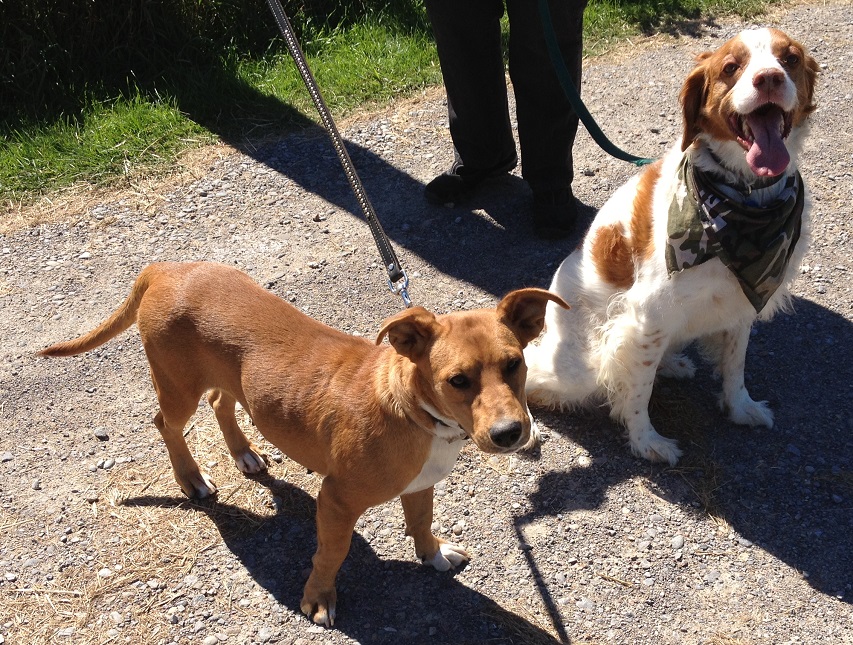Does speed really kill? Sometimes, yes, but when the speed limits are set artificially low, and enforcement is targeted to those areas where the limit is far below traffic speed, then all the speed kills campaign does is keep drivers complacent about paying fines that don’t improve safety.
In this video, I investigate the culture and science surrounding speed enforcement in BC, coupled with my trademark Simpsons, Supertroopers, and Family Guy references.
September 16, 2013
Speed Kills … Your Pocketbook
“This is Britain. And in Britain you can wear what you want.”
In the Telegraph, Dan Hodges defends the right of women to wear whatever they want:
The debate about “The Veil”, is neither necessary, nor is it complex. In fact, it’s very, very simple. This is Britain. And in Britain you can wear what you want.
Obviously there are practical exceptions. I can’t turn up to my local swimming pool and jump in with my clothes on, for example. When I tweeted about this earlier today a number of people asked: what about people going through airport security? And in that instance obviously veils should be removed. In the same way that when I pass through security, my shoes occasionally have to be removed. But that doesn’t alter the basic fact that if I still want to wander round in my pair of battered Adidas Samba, I’m free to do so. And any women who wishes to wear a veil is free to do that too.
“You can’t wear hoodies in shopping centres, or crash helmets in banks”, some people have pointed out. Fair enough. When the nation is trembling from an onslaught of Burka-clad steaming gangs I may reassess my view. But until then the rule remains; we are a free society, and we are free to wear the clothing of our choice.
I understand those who express concern about the cultural implications of veils. Indeed, I share them. My wife and I regularly drive through Stamford Hill to see relatives. When we do, we invariably reflect on the local Hasidic Jewish community, and how great it is that London is so rich culturally. But it’s noticeable that all the women, (and indeed the men), are essentially dressed in the same way. That’s great to look at from the outside, and reflects a strong sense of heritage and identity. Yet it also reflects conformity. And conformity is a bad thing. It stifles personal identity, and by extension freedom.
But from my point of view, that’s just tough. If I were to advocate passing a law that said Hasidic Jewish women should be banned from going out unless they’re dressed in bright, vibrant colours, I’d rightly be regarded as having lost my mind. And it’s no different to advocating we should start punishing women who decide to go out in a veil.
British battlefields and the belated preservation effort
In History Today, Julian Humphrys talks about the late start in preserving and interpreting the battlefields in Britain:
Few would disagree that battles have played a significant part in Britain’s history. The Norman Conquest after the Battle of Hastings in 1066 caused enormous social, political and cultural change; De Montfort’s victory at Lewes in 1264 led to the earliest forerunner of Parliament; Bruce’s victory at Bannockburn in 1314 helped secure Scotland’s independence from England while the battles of the mid-17th century helped change both the roles of Crown and Parliament and the relationship between the component parts of the United Kingdom. Furthermore the reputations of many great leaders were forged on the battlefield: Cromwell’s victories, for example, gave him both the opportunity and the desire to intervene on the national political stage. But why preserve the battlefields?
Part of the answer lies in the ground itself. Battlefields may contain important topographical and archaeological evidence, which can help us understand the events that took place on their soil. Walk the boggy ground at the foot of the steep slopes of Branxton Hill at Flodden and you’ll quickly understand how in 1513 advancing blocks of Scottish pikemen lost cohesion and momentum and floundered to bloody defeat at the hands of the Earl of Surrey’s English billmen (see James IV: Renaissance Monarch). By locating the fall of shot through metal detecting, archaeological projects at Edgehill (1642), Naseby (1645) and Culloden (1746) have helped us learn more about the dispositions of the armies and the course of the battles, while at Bosworth (1485) it has finally unearthed the actual location of the fighting itself.
[…]
It is sometimes said that Britain lags behind the US, Belgium and parts of France in the care, interpretation and promotion of its battlefields. Many more British schools visit the Western Front than they do the battlefields of the Wars of the Roses or the Civil Wars. There are a dozen First World War museums in and around Ypres alone, headed by the award-winning ‘In Flanders Fields’ museum in the town’s restored Cloth Hall. There are numerous bunkers and preserved or reconstructed sections of trench, over a hundred British and Commonwealth cemeteries, and countless walking tours, self-drive tours, coach tours, cycle tours, even balloon tours to choose from.
Many American Civil War battlefields are carefully tended, painstakingly interpreted and bristling with memorials. The field of Gettysburg (1863) is administered by the US National Park Service; with a staggering 1,300 monuments it has been described as one of the largest collections of outdoor sculpture in the world. But perhaps all this is to be expected, for while its civil war remains America’s most costly conflict and was fought at home, Britain has done much of its fighting abroad. Mention battlefields to a Briton and the chances are they will initially think of somewhere overseas, notably Ypres or the Somme. The Great War was in many ways our national Calvary — the first time that anything more than a relatively small British army took part in a major war, suffering mass casualties as a result. Furthermore much of it was fought just across the Channel within reach of the British visitor, most of whom will know of relatives who fought there.
Bears score last-second TD to beat Vikings 31-30
 I didn’t watch yesterday’s game, as we were busy with Maggie, our new dog. The Vikings haven’t won many games in Chicago this century, but yesterday’s game was tantalizingly close to being a win. The Bears scored the winning touchdown with only seconds to spare.
I didn’t watch yesterday’s game, as we were busy with Maggie, our new dog. The Vikings haven’t won many games in Chicago this century, but yesterday’s game was tantalizingly close to being a win. The Bears scored the winning touchdown with only seconds to spare.
1500ESPN‘s Jeff Dubay and Judd Zulgad react:
Day-late dog photos
A few weeks back, we said goodbye to our older dog, Buffy. Yesterday, we welcomed the newest member of the pack, Maggie:

Maggie and Xander on an introductory walk before we adopted her
Maggie is a rescue dog from Oklahoma. She’s part Corgi and part Basset Hound (the original rescue group noted her being a “Basset Mix”). We were told she’s about two years old, but she seems younger to us. She’s had at least one batch of puppies but has now been spayed.
Maggie and Xander got on well during our introductory walk at the rescue group, and they’ve played very well together since we picked her up yesterday. The rescue group has a minimum 24-hour cooling off period after you agree to adopt one of their dogs … I guess they had too many people changing their minds very soon after taking on a dog.
After we picked her up yesterday afternoon, we brought her back to the house and then took both dogs for a long walk around the area. Both of them were eager to walk and didn’t object to the other one being along for the experience. We got home and Xander came in first, followed by Maggie, then it was out to the back yard for exploration and some rough-housing. She’s very affectionate and moves very quickly, so getting a clear photo of her was a bit of a challenge … here she is just having come up for a quick petting before she goes and chases Xander again:

One of our key concerns about getting another dog was that any new addition would have to be able to cope with Xander’s combination of high energy and occasional fits of idiocy: Maggie already seems to have his number and plays with him very well indeed. It helps that she’s nearly as heavy as he is, but built closer to the ground: she can push him around when she really tries. I think he’s enjoying having another dog in the house again, and he almost certainly needs the exercise!



